Li Wang
Northeast Normal University
HCMRM: A High-Consistency Multimodal Relevance Model for Search Ads
Feb 09, 2025



Abstract:Search advertising is essential for merchants to reach the target users on short video platforms. Short video ads aligned with user search intents are displayed through relevance matching and bid ranking mechanisms. This paper focuses on improving query-to-video relevance matching to enhance the effectiveness of ranking in ad systems. Recent vision-language pre-training models have demonstrated promise in various multimodal tasks. However, their contribution to downstream query-video relevance tasks is limited, as the alignment between the pair of visual signals and text differs from the modeling of the triplet of the query, visual signals, and video text. In addition, our previous relevance model provides limited ranking capabilities, largely due to the discrepancy between the binary cross-entropy fine-tuning objective and the ranking objective. To address these limitations, we design a high-consistency multimodal relevance model (HCMRM). It utilizes a simple yet effective method to enhance the consistency between pre-training and relevance tasks. Specifically, during the pre-training phase, along with aligning visual signals and video text, several keywords are extracted from the video text as pseudo-queries to perform the triplet relevance modeling. For the fine-tuning phase, we introduce a hierarchical softmax loss, which enables the model to learn the order within labels while maximizing the distinction between positive and negative samples. This promotes the fusion ranking of relevance and bidding in the subsequent ranking stage. The proposed method has been deployed in the Kuaishou search advertising system for over a year, contributing to a 6.1% reduction in the proportion of irrelevant ads and a 1.4% increase in ad revenue.
DULRTC-RME: A Deep Unrolled Low-rank Tensor Completion Network for Radio Map Estimation
Feb 07, 2025



Abstract:Radio maps enrich radio propagation and spectrum occupancy information, which provides fundamental support for the operation and optimization of wireless communication systems. Traditional radio maps are mainly achieved by extensive manual channel measurements, which is time-consuming and inefficient. To reduce the complexity of channel measurements, radio map estimation (RME) through novel artificial intelligence techniques has emerged to attain higher resolution radio maps from sparse measurements or few observations. However, black box problems and strong dependency on training data make learning-based methods less explainable, while model-based methods offer strong theoretical grounding but perform inferior to the learning-based methods. In this paper, we develop a deep unrolled low-rank tensor completion network (DULRTC-RME) for radio map estimation, which integrates theoretical interpretability and learning ability by unrolling the tedious low-rank tensor completion optimization into a deep network. It is the first time that algorithm unrolling technology has been used in the RME field. Experimental results demonstrate that DULRTC-RME outperforms existing RME methods.
Exploring the latent space of diffusion models directly through singular value decomposition
Feb 04, 2025Abstract:Despite the groundbreaking success of diffusion models in generating high-fidelity images, their latent space remains relatively under-explored, even though it holds significant promise for enabling versatile and interpretable image editing capabilities. The complicated denoising trajectory and high dimensionality of the latent space make it extremely challenging to interpret. Existing methods mainly explore the feature space of U-Net in Diffusion Models (DMs) instead of the latent space itself. In contrast, we directly investigate the latent space via Singular Value Decomposition (SVD) and discover three useful properties that can be used to control generation results without the requirements of data collection and maintain identity fidelity generated images. Based on these properties, we propose a novel image editing framework that is capable of learning arbitrary attributes from one pair of latent codes destined by text prompts in Stable Diffusion Models. To validate our approach, extensive experiments are conducted to demonstrate its effectiveness and flexibility in image editing. We will release our codes soon to foster further research and applications in this area.
Overview of the Amphion Toolkit (v0.2)
Jan 26, 2025



Abstract:Amphion is an open-source toolkit for Audio, Music, and Speech Generation, designed to lower the entry barrier for junior researchers and engineers in these fields. It provides a versatile framework that supports a variety of generation tasks and models. In this report, we introduce Amphion v0.2, the second major release developed in 2024. This release features a 100K-hour open-source multilingual dataset, a robust data preparation pipeline, and novel models for tasks such as text-to-speech, audio coding, and voice conversion. Furthermore, the report includes multiple tutorials that guide users through the functionalities and usage of the newly released models.
Language model driven: a PROTAC generation pipeline with dual constraints of structure and property
Dec 12, 2024Abstract:The imperfect modeling of ternary complexes has limited the application of computer-aided drug discovery tools in PROTAC research and development. In this study, an AI-assisted approach for PROTAC molecule design pipeline named LM-PROTAC was developed, which stands for language model driven Proteolysis Targeting Chimera, by embedding a transformer-based generative model with dual constraints on structure and properties, referred to as the DCT. This study utilized the fragmentation representation of molecules and developed a language model driven pipeline. Firstly, a language model driven affinity model for protein compounds to screen molecular fragments with high affinity for the target protein. Secondly, structural and physicochemical properties of these fragments were constrained during the generation process to meet specific scenario requirements. Finally, a two-round screening of the preliminary generated molecules using a multidimensional property prediction model to generate a batch of PROTAC molecules capable of degrading disease-relevant target proteins for validation in vitro experiments, thus achieving a complete solution for AI-assisted PROTAC drug generation. Taking the tumor key target Wnt3a as an example, the LM-PROTAC pipeline successfully generated PROTAC molecules capable of inhibiting Wnt3a. The results show that DCT can efficiently generate PROTAC that targets and hydrolyses Wnt3a.
Adversarial Purification by Consistency-aware Latent Space Optimization on Data Manifolds
Dec 11, 2024Abstract:Deep neural networks (DNNs) are vulnerable to adversarial samples crafted by adding imperceptible perturbations to clean data, potentially leading to incorrect and dangerous predictions. Adversarial purification has been an effective means to improve DNNs robustness by removing these perturbations before feeding the data into the model. However, it faces significant challenges in preserving key structural and semantic information of data, as the imperceptible nature of adversarial perturbations makes it hard to avoid over-correcting, which can destroy important information and degrade model performance. In this paper, we break away from traditional adversarial purification methods by focusing on the clean data manifold. To this end, we reveal that samples generated by a well-trained generative model are close to clean ones but far from adversarial ones. Leveraging this insight, we propose Consistency Model-based Adversarial Purification (CMAP), which optimizes vectors within the latent space of a pre-trained consistency model to generate samples for restoring clean data. Specifically, 1) we propose a \textit{Perceptual consistency restoration} mechanism by minimizing the discrepancy between generated samples and input samples in both pixel and perceptual spaces. 2) To maintain the optimized latent vectors within the valid data manifold, we introduce a \textit{Latent distribution consistency constraint} strategy to align generated samples with the clean data distribution. 3) We also apply a \textit{Latent vector consistency prediction} scheme via an ensemble approach to enhance prediction reliability. CMAP fundamentally addresses adversarial perturbations at their source, providing a robust purification. Extensive experiments on CIFAR-10 and ImageNet-100 show that our CMAP significantly enhances robustness against strong adversarial attacks while preserving high natural accuracy.
Noro: A Noise-Robust One-shot Voice Conversion System with Hidden Speaker Representation Capabilities
Nov 29, 2024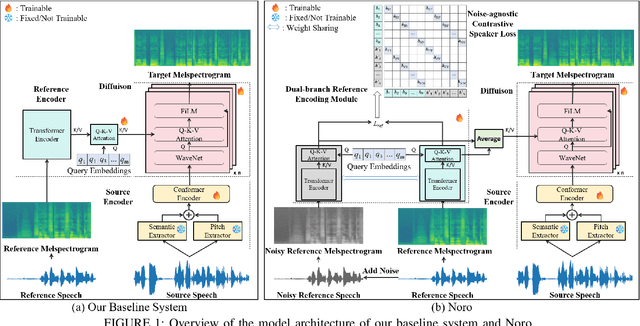
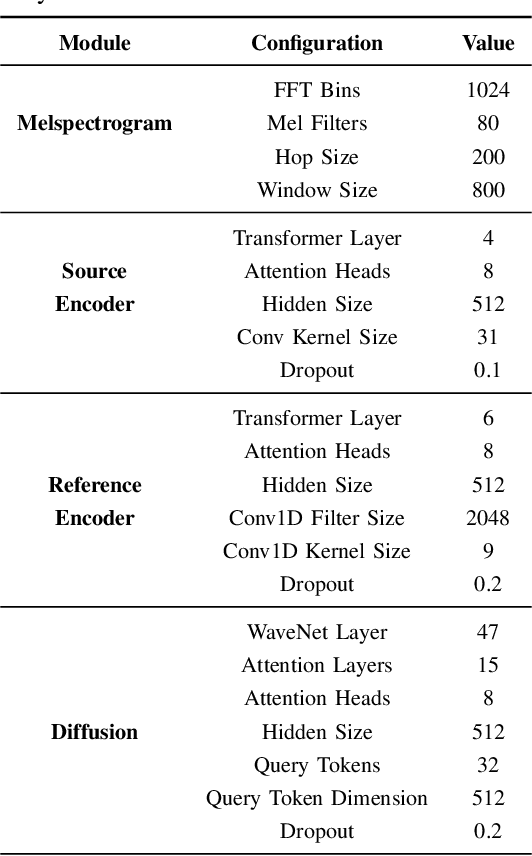
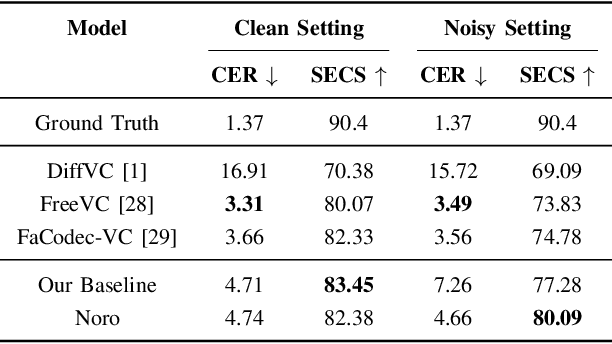
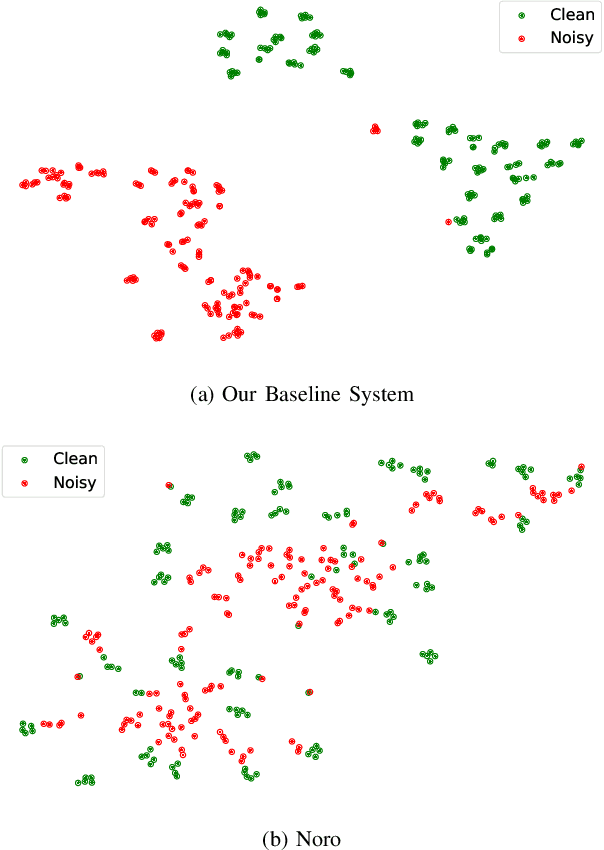
Abstract:One-shot voice conversion (VC) aims to alter the timbre of speech from a source speaker to match that of a target speaker using just a single reference speech from the target, while preserving the semantic content of the original source speech. Despite advancements in one-shot VC, its effectiveness decreases in real-world scenarios where reference speeches, often sourced from the internet, contain various disturbances like background noise. To address this issue, we introduce Noro, a Noise Robust One-shot VC system. Noro features innovative components tailored for VC using noisy reference speeches, including a dual-branch reference encoding module and a noise-agnostic contrastive speaker loss. Experimental results demonstrate that Noro outperforms our baseline system in both clean and noisy scenarios, highlighting its efficacy for real-world applications. Additionally, we investigate the hidden speaker representation capabilities of our baseline system by repurposing its reference encoder as a speaker encoder. The results shows that it is competitive with several advanced self-supervised learning models for speaker representation under the SUPERB settings, highlighting the potential for advancing speaker representation learning through one-shot VC task.
V2X-Radar: A Multi-modal Dataset with 4D Radar for Cooperative Perception
Nov 17, 2024
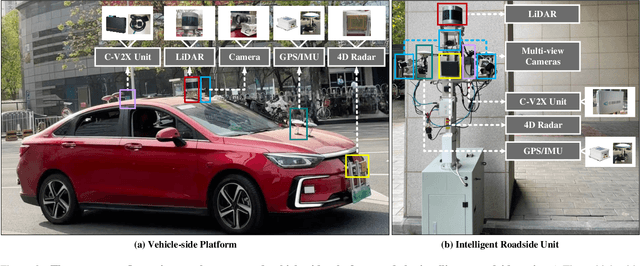


Abstract:Modern autonomous vehicle perception systems often struggle with occlusions and limited perception range. Previous studies have demonstrated the effectiveness of cooperative perception in extending the perception range and overcoming occlusions, thereby improving the safety of autonomous driving. In recent years, a series of cooperative perception datasets have emerged. However, these datasets only focus on camera and LiDAR, overlooking 4D Radar, a sensor employed in single-vehicle autonomous driving for robust perception in adverse weather conditions. In this paper, to bridge the gap of missing 4D Radar datasets in cooperative perception, we present V2X-Radar, the first large real-world multi-modal dataset featuring 4D Radar. Our V2X-Radar dataset is collected using a connected vehicle platform and an intelligent roadside unit equipped with 4D Radar, LiDAR, and multi-view cameras. The collected data includes sunny and rainy weather conditions, spanning daytime, dusk, and nighttime, as well as typical challenging scenarios. The dataset comprises 20K LiDAR frames, 40K camera images, and 20K 4D Radar data, with 350K annotated bounding boxes across five categories. To facilitate diverse research domains, we establish V2X-Radar-C for cooperative perception, V2X-Radar-I for roadside perception, and V2X-Radar-V for single-vehicle perception. We further provide comprehensive benchmarks of recent perception algorithms on the above three sub-datasets. The dataset and benchmark codebase will be available at \url{http://openmpd.com/column/V2X-Radar}.
A Field Calibration Approach for Triaxial MEMS Gyroscopes Based on Gravity and Rotation Consistency
Oct 25, 2024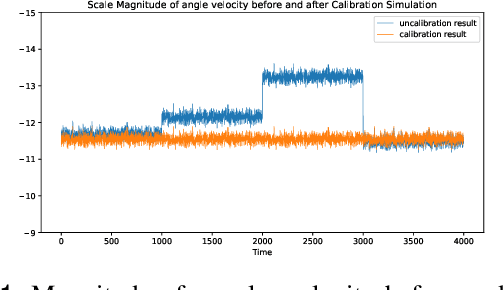
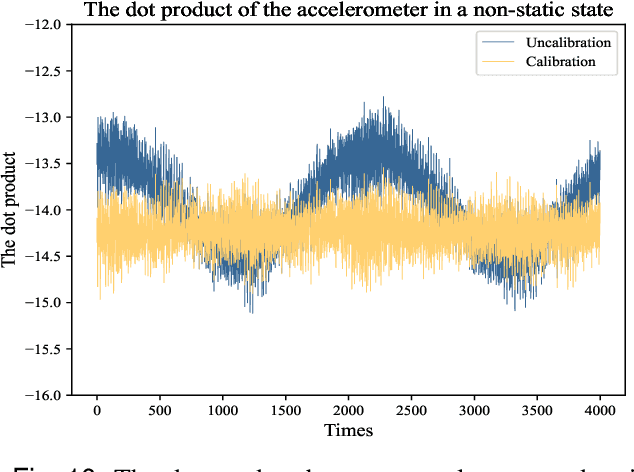
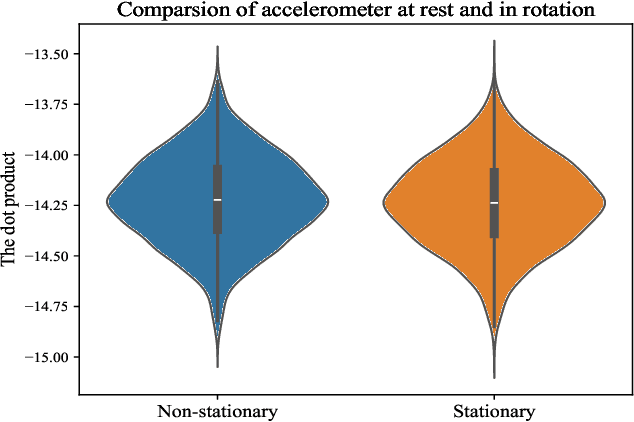
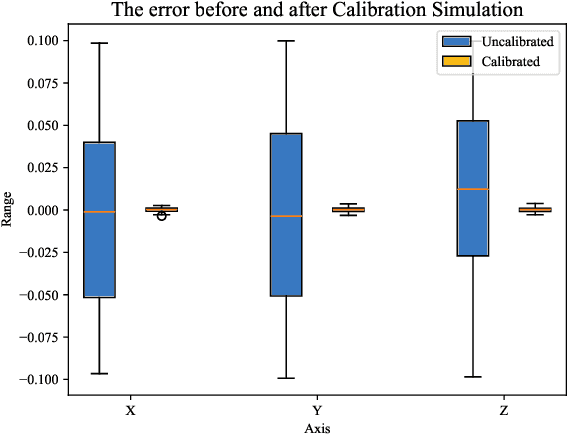
Abstract:This paper developed an efficient method for calibrating triaxial MEMS gyroscopes, which can be effectively utilized in the field environment. The core strategy is to utilize the criterion that the dot product of the measured gravity and the rotation speed in a fixed frame remains constant. To eliminate the impact of external acceleration, the calibration process involves separate procedures for measuring local gravity and rotation speed. Moreover, unlike existing approaches for auto calibration of triaxial sensors that often result in nonlinear optimization problems, the proposed method simplifies the estimation of the gyroscope scale factor by employing a linear least squares algorithm. Extensive numerical simulations have been conducted to analyze the proposed method's performance in calibrating the six-parameter triaxial gyroscope model, taking into consideration measurements corrupted by simulated noise. Experimental validation was also carried out using two commercially available MEMS inertial measurement units (LSM9DS1) and a servo motor. The experimental results effectively demonstrate the efficacy of the proposed calibration approach.
RemoteDet-Mamba: A Hybrid Mamba-CNN Network for Multi-modal Object Detection in Remote Sensing Images
Oct 17, 2024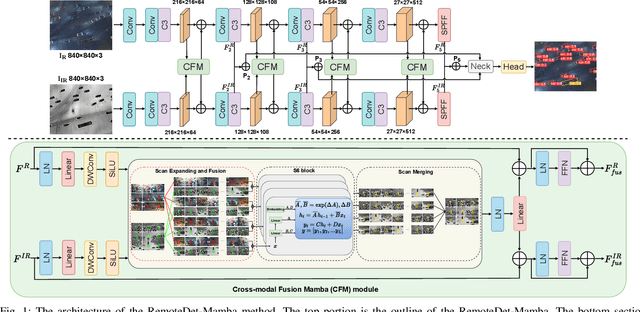
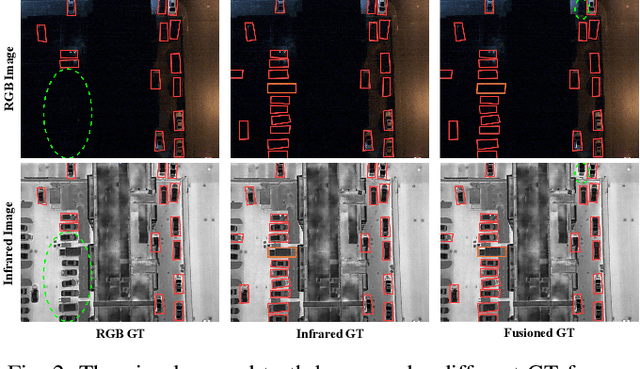
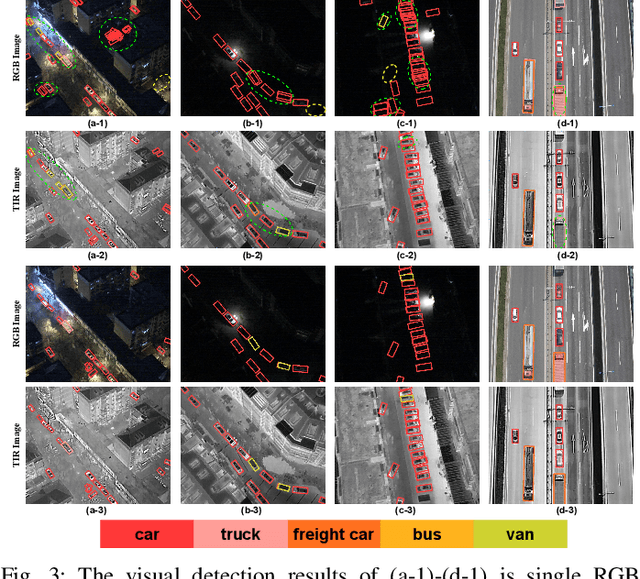
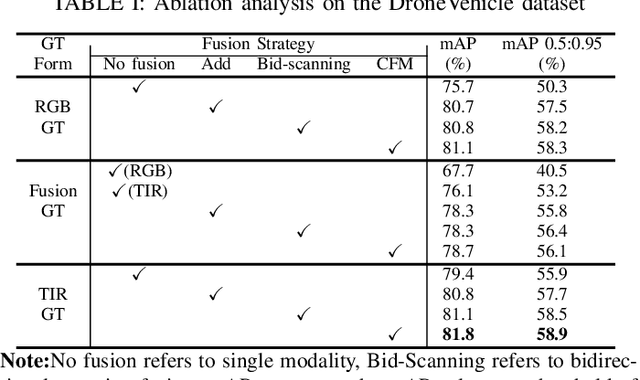
Abstract:Unmanned aerial vehicle (UAV) remote sensing is widely applied in fields such as emergency response, owing to its advantages of rapid information acquisition and low cost. However, due to the effects of shooting distance and imaging mechanisms, the objects in the images present challenges such as small size, dense distribution, and low inter-class differentiation. To this end, we propose a multimodal remote sensing detection network that employs a quad-directional selective scanning fusion strategy called RemoteDet-Mamba. RemoteDet-Mamba simultaneously facilitates the learning of single-modal local features and the integration of patch-level global features across modalities, enhancing the distinguishability for small objects and utilizing local information to improve discrimination between different classes. Additionally, the use of Mamba's serial processing significantly increases detection speed. Experimental results on the DroneVehicle dataset demonstrate the effectiveness of RemoteDet-Mamba, which achieves superior detection accuracy compared to state-of-the-art methods while maintaining computational efficiency and parameter count.
 Add to Chrome
Add to Chrome Add to Firefox
Add to Firefox Add to Edge
Add to Edge